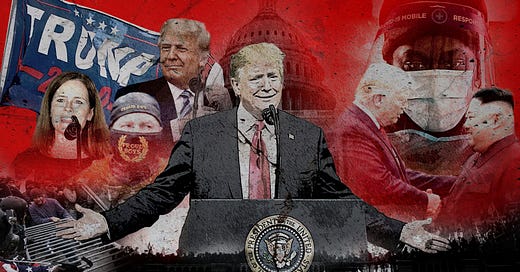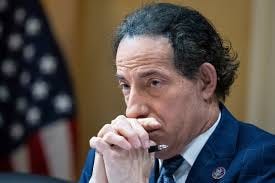By Kimberly Beck
Villains have co-opted the White House. They are dismantling entire federal agencies. They have access to our personal information and who knows what they plan to do with it. They are ignoring Congress. And the Democratic response? Uninspiring? Boring? Muted? What if our elected Democrats were more visible and vocal and acted like a true Opposition Party?
Clearly, our country is barrelling down a dangerous road. It’s time for Democrats to get organized and get loud. It’s time to follow the lead of other democracies, including England, France, Italy, Japan and Australia. It’s time to create a Shadow Cabinet.
Timothy Snyder, Yale history professor and author of the bestselling On Tyranny: Twenty Lessons from the Twentieth Century, has been advocating a Shadow Cabinet for years. In his Substack: Thinking About… Shadow Cabinet – A Positive Form of Opposition, Snyder explains how Shadow Cabinets resist tyranny, and why it’s time for Democrats to form one.
What is a shadow cabinet?
A Shadow Cabinet is an opposition party wish list of who would hold various cabinet positions if the party head were commander-in-chief. Shadow cabinets name public figures, party leaders, lawmakers, and other experts to represent an alternative and opposing voice.
Why bother? If Democrats have no power anyway, don’t we need to focus on saving our democracy and protecting our freedoms? There are several reasons why a shadow cabinet will help Democrats protect both democracy and freedom:
A Shadow Cabinet takes control of the narrative and clarifies the party message, both moves that the Democratic party desperately needs. For example, after Trump and Vance’s shameful treatment of Ukrainian President Zelensky at the White House, Pennsylvania Governor Josh Shapiro offered a clear counter statement with a focus on America’s values. Shapiro did the same after Trump slapped tariffs on Canada and Mexico. With Shapiro as a “shadow” Secretary of State, we could rely on consistent messages from a trusted source within the Democratic party.
A Shadow Cabinet gives a platform to rising stars within the party. When Pete Buttigieg was Biden’s Transportation Secretary, he regularly went on Fox News and was known for effectively communicating with their audience. A voice like this holding a Shadow Cabinet position would offer a counter narrative to specific policies, letting voters re-gain trust in the Democratic party.
A Shadow Cabinet creates a point person for journalists seeking the “other side,” thus keeping pressure on the party in power. Rather than quoting “anonymous sources,” or numerous and disparate voices, journalists can quote a Shadow Cabinet member, a much more credible source.
A Shadow Cabinet gives voters alternatives for the next election, reminding the public, as the Washington Monthly wrote, “that Democrats, while suffering a defeat, came close to winning, are ready to govern, and can lead in ways that matter in people’s real lives.” In other words, the Shadow Cabinet members can be out there fighting back against the lies.
While a Shadow Cabinet seems to be gaining traction in grassroots circles, Democratic leaders appear hesitant. Connecticut Senator Chris Murphy recently worried that a Shadow Cabinet would cause infighting. And it might — at first. But right now Democrats, getting very little coverage in the press, are on the verge of becoming irrelevant. Some healthy conflict within the party could show voters what our future leaders are made of, allow their personalities to come out, and ultimately unify the party. Bonus — a Shadow Cabinet might even be entertaining.
Right now there is no face of the Democratic Party. We do not have a leader. A Shadow Cabinet is a way to build the bench of future leaders and to see who emerges. The UK offers examples. Tony Blair was in the Shadow Cabinet before becoming Prime Minister. Theresa May served as the Shadow Home Secretary before going on to become Prime Minister.
In the past few weeks, a possible Democratic Shadow Cabinet has gained ground in the media. Along with the Washington Monthly, the idea has been featured on CNN, the Washington Post, The American Prospect, In These Times, and local publications.
Robert Hubbell recently echoed Timothy Snyder’s call for a Shadow Cabinet, if only to get things moving. Hubbell even recommended Shadow Cabinet members, including Jamie Raskin (DOJ), Elizabeth Warren (Social Security and Medicare), and Gretchen Whitmer (Education). And NOT having Chuck Schumer be the shadow leader of the US Senate!
What Can You Do?
Call your elected officials in Congress and tell them to form a Shadow Cabinet. Timothy Synder suggests calling it something less dark, like the People’s Cabinet. One thing is clear — it’s time for Democrats to raise their voices and act like the Opposition Party. This would be an important first step.
Suggested Script for Calling Congress
Script: Hi, my name is [Your Name] and I’m a constituent from [Your City/Town], [Your State]. My zip code is [Your Zip Code]. Right now it appears like Democrats in Congress have little power and no voice. That may not be the truth but it is the perception. I am calling to urge the Democratic party to form a shadow cabinet, or the “People’s Cabinet.” I ask that [Congressperson’s Name] publicly express support for this idea and work to build consensus among colleagues, in order to help Democrats control more of the narrative and showcase future leaders of the party. Thank you.”
Other Things You Can Do
Keep the conversation alive. Talk about the benefits of an Opposition Party Shadow Government in your activist groups. Generate more support for the idea.
Raise the question at town halls, so more people are exposed to the idea of a shadow cabinet. Ask them if they are open to advocating for a shadow cabinet as proposed by Timothy Snyder and others to showcase the bold ideas of the Opposition Party.
Grassroots pressure has moved Democratic leaders in the past. If enough of us advocate for a shadow cabinet, we can make it a reality!
Kimberly Beck is co-founder of Downtown Nasty Women Social Group whose mission is to spark civic engagement, increase voter participation, elect Democrats up and down the ballot across the country, and shift the balance of power in order to improve people’s lives.








The time has come!
The media needs a focal point that can voice rational, historical and constitutional views on issues. A shadow cabinet is well established tradition in many democracies.
This is an opportunity that we cannot pass up.